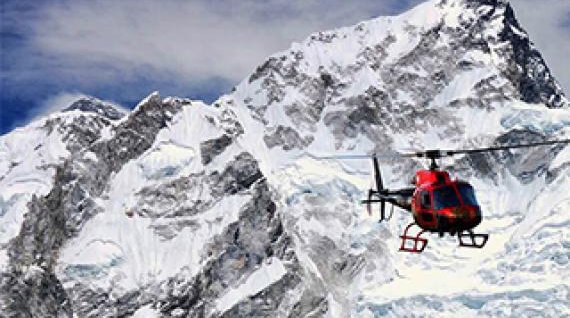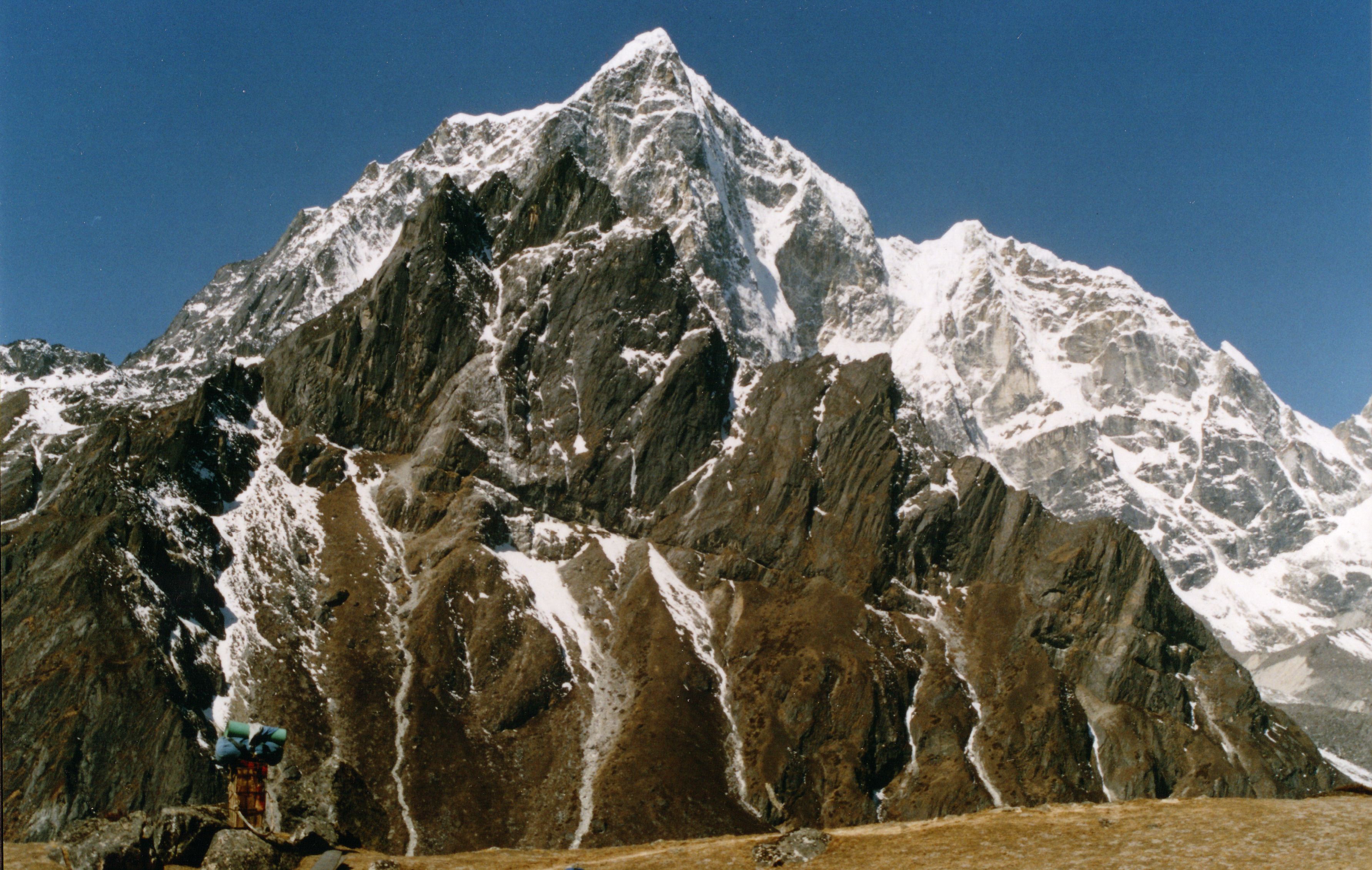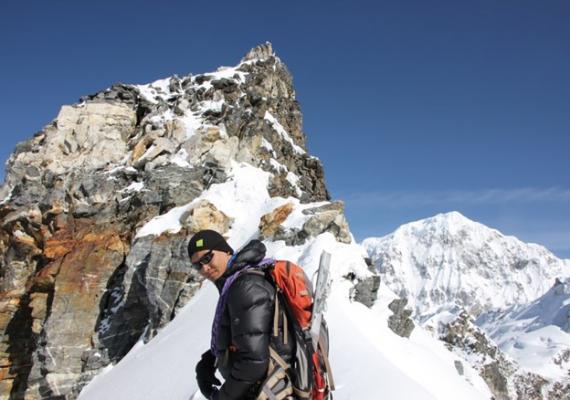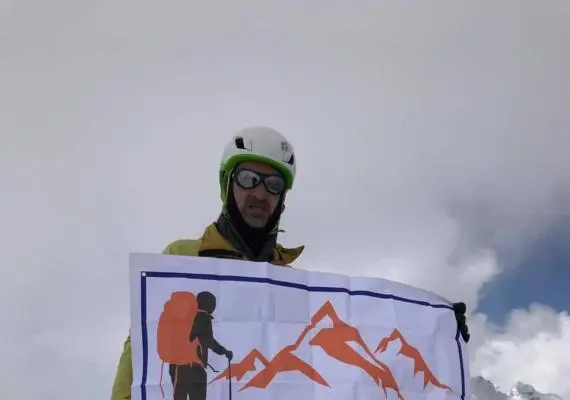Imagine soaring above the world's highest peaks, witnessing the mighty Everest from a bird's eye view, all within a few hours from Nepal's capital. The Kathmandu to Everest helicopter tour offers an extraordinary opportunity to experience the Himalayas without the physical demands of trekking. This aerial adventure takes you from the bustling city to the roof of the world, providing breathtaking views of snow-capped giants, ancient glaciers, and remote Sherpa villages.
Whether you're a time-constrained traveler, physically unable to trek, or simply seeking a luxurious mountain experience, this comprehensive guide covers everything you need to know. From comparing shared versus private charter options to understanding the best flying conditions, we'll help you make an informed decision about this once-in-a-lifetime journey that brings you face-to-face with Mount Everest.
In the following sections, we'll explore every aspect of this remarkable aerial journey, from detailed cost breakdowns and seasonal considerations to safety protocols and booking strategies. You'll discover why thousands of travelers choose this spectacular flight experience each year, and how you can make the most of your Himalayan helicopter adventure.
Everest Base Camp Helicopter Tour Cost
Understanding the Price Structure
The Everest Base Camp helicopter tour cost varies significantly based on several factors that every potential traveler should understand. Shared group flights typically range from $1,200 to $1,400 per person, while private charter prices start at $4,500 for the entire helicopter. These rates include all necessary permits, fuel surcharges, and landing fees, but understanding what drives these costs helps you make an informed decision.
The base price covers the helicopter operational costs, which include specialized high-altitude aviation fuel, mandatory insurance, and the expertise of mountain-certified pilots. Additionally, the remote nature of the operation means helicopters must carry extra fuel for safety margins, adding to operational expenses. The landing fees at various points, particularly at high-altitude locations like Kala Patthar, contribute significantly to the overall cost structure.
What's Included in the Price
Most tour packages include comprehensive services to ensure a seamless experience:
Standard Inclusions:
- Round-trip helicopter flight from Kathmandu
- All required permits and aviation fees
- Oxygen cylinders and oximeter monitoring
- Experienced mountain pilot with minimum 2,000 flight hours
- Landing fees at approved locations
- Light breakfast at Everest View Hotel (select packages)
- Pre-flight safety briefing
- Basic insurance coverage during flight
- Airport transfers (premium packages)
Premium Package Additions:
- Professional photography service
- Celebratory champagne at Everest View Hotel
- Commemorative flight certificate
- Extended landing time at viewpoints
- Flexible departure timing
- Dedicated ground support team
Hidden Costs to Consider
While tour operators strive for transparency, budget for these additional expenses that may not be immediately apparent:
Essential Extras:
- Airport transfers in Kathmandu ($20-30 each way)
- Travel insurance with helicopter evacuation coverage ($100-200)
- Tips for pilot and ground crew ($50-100 total recommended)
- Personal expenses at Everest View Hotel ($20-50)
- Professional photography services ($200-500 optional)
- Warm clothing rental if needed ($30-50)
- Portable oxygen canister for personal use ($25)
- Commemorative certificate framing ($15-20)
Optional Upgrades:
- Window seat guarantee ($100-150)
- Extended landing time ($200-300)
- Private vehicle airport transfers ($50)
- Premium breakfast upgrade ($30-40)
- Personalized flight route ($500+)
Seasonal Price Variations
Prices fluctuate throughout the year based on demand and operational factors:
Peak Season (October-November, March-May):
- 10-15% higher than base rates
- Advance booking essential
- Limited last-minute availability
- Premium for specific dates (full moon, festivals)
Shoulder Season (September, December, February):
- Standard pricing applies
- Good availability
- Weather-dependent flexibility
- Group discounts possible
Off-Season (June-August):
- 5-10% discount available
- Weather risk higher
- More flexible scheduling
- Fewer group departures
Winter Specials (January):
- 15-20% off regular prices
- Crystal clear views when flying
- Limited daily operations
- Smaller group sizes
Payment and Booking Considerations
Understanding payment structures helps with planning:
Deposit Requirements:
- 30-50% advance payment to secure booking
- Full payment 7 days before flight
- Credit card processing fees (3-4%)
- Bank transfer options available
Cancellation Policies:
- Weather cancellations: 100% refund or reschedule
- Personal cancellations: Varies by timing
- 30+ days: Full refund minus processing
- 7-29 days: 50% refund
- Less than 7 days: No refund typically
Flight Path Technical Details
Understanding the route enhances appreciation of the journey:
Outbound Route Specifics:
- Initial climb to 10,000 feet over Kathmandu Valley
- Eastern heading toward Solu Khumbu region
- Follow Dudh Koshi River valley
- Progressive altitude gain following terrain
- Navigation checkpoints at major villages
Key Landmarks and Timing:
15 minutes: Departure from urban landscape 25 minutes: First major Himalayan views 35 minutes: Namche Bazaar visible below 45 minutes: Tengboche Monastery passage 55 minutes: Ama Dablam close approach 65 minutes: Everest Base Camp area
Return Route Variations: Pilots may choose alternate return paths for variety:
- Western route via Gokyo Valley
- Southern route over Phortse Village
- Direct route in adverse conditions
Mountain Identification Guide
During your flight, you'll witness numerous peaks:
8,000m+ Giants:
- Mount Everest (8,849m) - The crown jewel
- Lhotse (8,516m) - Fourth highest
- Makalu (8,485m) - Distant eastern view
- Cho Oyu (8,188m) - Visible to the west
Prominent 7,000m+ Peaks:
- Nuptse (7,861m) - Everest's neighbor
- Pumori (7,161m) - "Everest's Daughter"
- Ama Dablam (6,812m) - The "Matterhorn of the Himalayas"
- Thamserku (6,623m) - Guardian of Namche
Glaciers and Icefalls:
- Khumbu Glacier - Everest's highway
- Khumbu Icefall - The deadly maze
- Nuptse Glacier - Dramatic seracs
- Lhotse Glacier - Eastern approach
Landing Options & Viewpoints
Primary Landing Site: Kala Patthar
The Kala Patthar viewpoint at 5,545m (source: Nepal Tourism Board, 2024) stands as the premier helicopter landing site for Everest views. This black rock outcrop offers unobstructed vistas of Everest's summit, making it the most sought-after landing location.
Why Kala Patthar:
- Closest viewpoint to Everest accessible by helicopter
- 360-degree panoramic views
- Stable landing surface
- Protected from direct winds
- Historical significance for climbers
Landing Experience:
- 10-15 minute ground time (altitude dependent)
- Professional photo opportunities
- Oxygen support available
- Guide commentary on surrounding peaks
- Commemorative certificate presentation
Photography Tips:
- Best light in early morning
- Wide-angle lens recommended
- Bring extra batteries (cold drains power)
- Protective gear for equipment
- Pre-plan shot compositions
Everest View Hotel: Comfort Stop
Located at 3,880m (source: Syangboche Airport Authority, 2024), this luxury establishment provides the perfect comfort break:
Facilities and Services:
- Heated indoor viewing galleries
- Panoramic telescope installations
- Hot breakfast buffet or à la carte
- Clean Western-style restrooms
- Oxygen bar for altitude relief
- Gift shop with authentic items
- Professional photography service
- Wi-Fi connectivity (limited)
Dining Experience:
- Continental and local breakfast options
- Fresh-baked goods daily
- Premium tea and coffee selection
- Champagne service available
- Special dietary accommodations
- Indoor and outdoor seating
Cultural Elements:
- Traditional Sherpa hospitality
- Local artwork displays
- Historical Everest expedition photos
- Library with mountaineering books
- Interaction with local staff
Alternative Landing Sites
Weather conditions may necessitate alternate landing locations:
Pheriche (4,371m):
- Valley location with protection
- Medical facility nearby
- Good Ama Dablam views
- Longer ground time possible
- Traditional Sherpa settlement
Kongde (4,250m):
- Less crowded alternative
- Unique perspective of Everest
- Pristine mountain environment
- Extended flight time required
- Photography opportunities
Syangboche Airport (3,780m):
- Adjacent to Everest View Hotel
- Most weather-reliable option
- Developed infrastructure
- Multiple viewing angles
- Shopping opportunities
Tengboche (3,867m):
- Cultural significance
- Famous monastery visit possible
- Rhododendron forests (spring)
- Lower altitude comfort
- Spiritual atmosphere
Seasonal Landing Considerations
Different seasons affect landing options:
Spring Advantages:
- All sites typically accessible
- Rhododendron blooms at lower sites
- Stable morning conditions
- Extended landing possible
Autumn Benefits:
- Crystal clear views
- All sites operational
- Perfect photography conditions
- Comfortable temperatures
Winter Challenges:
- Some sites may be restricted
- Shorter ground time
- Extra warm clothing essential
- Pristine snow conditions
Monsoon Limitations:
- Lower altitude sites only
- Flexible approach required
- Dramatic cloud formations
- Limited high-altitude access
Private Charter vs Shared Helicopter Tours
Comprehensive Shared Tour Analysis
Shared Group Tour Dynamics:
Shared tours accommodate 4-5 passengers per flight, creating a social atmosphere while maintaining cost efficiency. These tours operate on fixed schedules, typically with morning departures to catch optimal weather windows.
Booking Process:
- Reserve individual seats online
- Join pre-formed groups
- Meet fellow adventurers at briefing
- Share memorable experiences
- Exchange photos post-flight
Advantages of Shared Tours:
- Cost-effective at $1,200-1,400 per person
- Meet like-minded travelers
- Fixed departure schedules provide structure
- Professional coordination included
- Safety in numbers concept
- Shared excitement and energy
- Lower individual carbon footprint
Considerations for Shared Tours:
- Less flexibility with timing
- Weight restrictions more stringent (typically 80kg/person limit)
- Mixed group dynamics may vary
- Limited customization options
- Fixed photo stop duration
- Standard route only
- May need to accommodate others' needs
Ideal Candidates for Shared Tours:
- Solo travelers seeking company
- Budget-conscious adventurers
- First-time helicopter passengers
- Those with flexible schedules
- Social travelers enjoying group dynamics
Private Charter Comprehensive Benefits
Complete Flexibility and Control:
Private charters transform the experience into a personalized adventure tailored to your specific needs and preferences.
Customization Options:
- Departure time selection (sunrise flights possible)
- Route modifications within safety parameters
- Extended landing times at preferred locations
- Special occasion arrangements
- Professional photography coordination
- Specific mountain focus areas
- Dietary preferences for meals
- Language-specific guides
Private Charter Scenarios and Benefits:
Family Groups (4-5 people):
- Keep the experience within family
- Accommodate varying fitness levels
- Child-friendly pace and commentary
- Family photo opportunities
- Shared memories creation
- Cost becomes comparable to shared tours
Honeymoon and Romance Packages:
- Intimate experience for two
- Champagne breakfast arrangement
- Extended privacy at viewpoints
- Professional couple photography
- Sunrise departure option
- Customized celebration elements
Photography Expeditions:
- Flexible positioning for best shots
- Extended hovering time possible
- Multiple landing attempts if needed
- Early morning golden hour flights
- Specific angle approaches
- Professional photographer accommodation
Corporate and Incentive Groups:
- Team building experience
- Branded elements possible
- VIP treatment throughout
- Flexible scheduling for business needs
- Conference call facilities pre/post flight
- Achievement recognition ceremonies
Making the Right Choice: Decision Framework
Budget Analysis:
- Solo or couple: Shared tour optimal
- Group of 3: Consider both options
- Group of 4+: Private becomes cost-effective
- Special occasions: Private worth premium
Schedule Flexibility Needs:
- Fixed departure OK: Shared suitable
- Specific timing required: Private necessary
- Multiple date options: Shared works
- Single opportunity: Private recommended
Experience Priorities:
- Standard Everest views: Shared sufficient
- Specific requirements: Private essential
- Social experience desired: Shared ideal
- Intimate experience: Private required
Comfort and Health Considerations:
- Standard fitness: Either option works
- Special needs: Private recommended
- Altitude sensitivity: Private allows flexibility
- Age extremes: Private provides comfort
Best Time & Weather Considerations
Detailed Seasonal Analysis
Autumn Season (October-November): The Golden Period
Autumn represents the pinnacle of helicopter touring conditions in the Everest region. Post-monsoon atmospheric cleaning creates unparalleled visibility, often exceeding 100 kilometers.
October Specifics:
- Clear skies probability: 85-90%
- Temperature at base: 10-15°C
- Summit winds: 40-60 km/h average
- Flight success rate: 90%+
- Booking demand: Highest
November Characteristics:
- Visibility: Exceptional
- Crowds: Decreasing
- Temperatures: Cooler but manageable
- Snow coverage: Increasing beauty
- Value: Better availability
Spring Season (March-May): Nature's Awakening
Spring offers the second-best window for helicopter tours, with additional natural beauty from blooming rhododendrons at lower elevations.
March Overview:
- Weather stability: Building
- Temperature range: 5-12°C
- Pre-monsoon clarity: Developing
- Booking advantage: Less competition
- Special feature: Snow-capped peaks pristine
April Prime Time:
- Optimal conditions emerging
- Rhododendron forests: Full bloom
- Temperature: Comfortable throughout
- Everest expeditions: Exciting activity visible
- Photography: Excellent conditions
May Considerations:
- Pre-monsoon buildup beginning
- Morning flights: Essential
- Heat haze: Afternoon issue
- Expedition season: Peak activity
- Booking: High demand
Weather Windows and Optimal Flight Times
Early Morning Advantage (5:00-8:00 AM):
- Calmest wind conditions
- Best mountain visibility
- Golden sunrise lighting
- 95% success rate
- Cooler temperatures
- Less turbulence
- Clearer photography conditions
Mid-Morning Flights (8:00-11:00 AM):
- Good visibility continues
- Warming temperatures
- Increased thermal activity
- 85% success rate
- More comfortable for passengers
- Breakfast timing ideal
Afternoon Challenges (After 11:00 AM):
- Cloud buildup common
- Stronger winds develop
- Reduced visibility likely
- 60% success rate
- Not recommended generally
- Emergency/rescue priority
Monsoon and Winter Considerations
Monsoon Season (June-September): Adventure Option
While challenging, monsoon flights offer unique perspectives:
Advantages:
- Dramatic cloud formations
- Lush green landscapes
- Fewer tourists
- Potential discounts
- Waterfall activity
Challenges:
- 40-50% cancellation rate
- Limited high-altitude access
- Flexible scheduling essential
- Multiple backup dates needed
- Lower altitude focus
Winter Season (December-February): Crystal Clarity
Winter provides exceptional visibility with unique challenges:
Benefits:
- Clearest mountain views
- Minimal precipitation
- Uncrowded experience
- Pristine snow conditions
- Photography paradise
Considerations:
- Extreme cold (-10 to -20°C at altitude)
- Shorter operational hours
- Limited ground time
- Extra clothing essential
- Restricted landing sites
Weather Monitoring and Decisions
24-Hour Forecast System:
- Satellite imagery analysis
- Local weather station data
- Pilot reports compilation
- Military weather access
- Real-time updates
Decision Timeline:
- 24 hours before: Initial assessment
- 12 hours: Confirmation likelihood
- 6 hours: Final weather check
- 2 hours: Go/no-go decision
- Departure: Continuous monitoring
Weather Guarantee Policies:
Most operators offer comprehensive protection:
- Free rescheduling for weather
- Priority rebooking status
- Full refund if unable to fly
- Alternative date coordination
- Extended validity periods
Safety Measures & Altitude Considerations
Comprehensive Helicopter Safety Standards
All Everest helicopter tour operators must maintain stringent safety protocols that exceed international aviation standards:
Aircraft Specifications:
- Twin-engine helicopters mandatory (AS350 B3e, Bell 407)
- High-altitude performance certification
- Regular maintenance every 100 flight hours
- Annual comprehensive inspections
- Emergency flotation systems
- Advanced avionics packages
- Satellite tracking systems
- Emergency locator beacons
Pilot Qualifications:
- Minimum 2,000 total flight hours
- 500+ high-altitude specific hours
- Annual mountain flying recertification
- Regular simulation training
- Medical fitness certificates
- English proficiency requirements
- Cultural sensitivity training
- Emergency response certification
Operational Safety Measures:
- Weather monitoring systems
- Real-time flight tracking
- Ground support teams
- Emergency response protocols
- Communication redundancy
- Fuel reserve requirements
- Weight and balance calculations
- Passenger briefing standards
Altitude Physiology and Preparation
Understanding Altitude Effects:
The rapid altitude gain during helicopter tours requires understanding and preparation:
Altitude Zones:
- Kathmandu (1,400m): No effects
- 3,000m: Mild breathlessness possible
- 4,000m: Noticeable air thinning
- 5,000m+: Significant oxygen reduction
- Kala Patthar (5,545m): 50% oxygen availability
Pre-Flight Preparation (48 Hours Before):
- Hydration increase to 4-5 liters daily
- Avoid alcohol and smoking
- Light exercise maintenance
- Adequate sleep prioritization
- Carbohydrate-rich diet
- Medication consultation if needed
- Mental preparation for altitude
Day-of-Flight Protocol:
- Light breakfast only
- Continued hydration
- Comfortable clothing layers
- Positive mental attitude
- Medication as prescribed
- Avoid caffeine excess
- Rest before flight
During Flight Management:
- Use supplemental oxygen above 4,000m
- Breathe deeply and regularly
- Move slowly during landings
- Stay warm with provided blankets
- Monitor personal symptoms
- Communicate any discomfort
- Follow crew instructions explicitly
Health Screening and Considerations
Medical Conditions Requiring Attention:
Absolute Contraindications:
- Recent heart attack (within 6 months)
- Uncontrolled high blood pressure
- Severe respiratory conditions
- Recent stroke or brain surgery
- Severe anemia
- Sickle cell disease
Relative Contraindications (Doctor Consultation Required):
- Pregnancy (especially first/third trimester)
- Diabetes requiring insulin
- Recent surgery (within 4 weeks)
- Chronic heart conditions
- Severe arthritis affecting mobility
- Psychiatric conditions affecting judgment
- Children under 3 years
Age Considerations:
- Under 10: Parental discretion advised
- 10-70: Generally no restrictions
- 70+: Medical clearance recommended
- 80+: Case-by-case evaluation
Emergency Response Protocols
Comprehensive Emergency Preparedness:
Every flight includes multiple layers of emergency preparedness:
On-Board Emergency Equipment:
- Medical-grade oxygen systems
- First aid supplies
- Emergency medications
- Portable defibrillator (select operators)
- Satellite communication devices
- Emergency shelter equipment
- Survival rations and water
- Thermal blankets
Emergency Response Procedures:
- Immediate descent protocols
- Nearest medical facility coordination
- Helicopter evacuation readiness
- Insurance company liaison
- Embassy notification systems
- Family communication protocols
- Medical history access
- Ground ambulance coordination
Insurance Coordination Services:
- 24/7 helpline activation
- Direct billing arrangements
- Medical facility pre-authorization
- Evacuation coverage verification
- Claim documentation assistance
- Translation services
- Medical report compilation
- Follow-up care coordination
Risk Mitigation Strategies
Operator Selection Criteria:
- Certification verification
- Safety record review
- Insurance coverage confirmation
- Pilot experience validation
- Aircraft maintenance logs
- Customer testimonial analysis
- Emergency protocol review
- Ground support assessment
Personal Risk Reduction:
- Comprehensive travel insurance
- Medical check-up prior
- Fitness improvement program
- Altitude medication consideration
- Emergency contact preparation
- Medical history documentation
- Flexible scheduling allowance
- Weather backup dates
Reserve your Everest helicopter tour from Kathmandu – shared or private options start at US$ 1,200. Book your window seat today!
Photography and Videography Guide
Equipment Recommendations
Essential Camera Gear:
- Wide-angle lens (16-35mm) for mountain vistas
- Telephoto lens (70-200mm) for peak details
- Polarizing filter for glare reduction
- Extra batteries (3-4 sets minimum)
- Memory cards (64GB+ recommended)
- Lens cleaning supplies
- Protective camera bag
Smartphone Photography:
- Clean lens before flight
- Airplane mode activation
- Power bank fully charged
- Storage space cleared
- HDR mode utilization
- Panorama feature ready
- Video stabilization on
Best Shooting Techniques
In-Flight Photography:
- Shutter speed 1/1000s minimum
- ISO flexibility required
- Continuous shooting mode
- Focus on infinity
- Vibration reduction active
- Window glare management
- Composition pre-planning
Landing Site Photography:
- Quick setup essential
- Multiple angle coverage
- Group photo coordination
- Summit detail capture
- Panoramic opportunities
- Time management crucial
- Backup shots important
Booking Strategies and Tips
Advance Booking Advantages
Peak Season Strategy:
- Book 2-3 months ahead
- Flexibility with dates
- Group formation early
- Preferred timing secured
- Cancellation protection
- Price lock benefits
- Upgrade possibilities
Last-Minute Opportunities:
- Standby list joining
- Flexible date advantages
- Potential upgrades
- Distress sale prices
- Weather window watching
- Direct operator contact
- Package deal potential
Group Booking Benefits
Coordinating Group Tours:
- Single point coordination
- Bulk discount negotiation
- Custom timing possible
- Private charter threshold
- Shared excitement building
- Pre-trip planning together
- Post-trip sharing facilitated
Quick Takeaways
- Cost Range: Shared tours $1,200-1,400 per person; private charters from $4,500 total
- Flight Duration: 3-4 hours total including landing time and breakfast stop
- Best Months: October-November and March-May for optimal visibility
- Maximum Altitude: 5,545m at Kala Patthar landing site
- Early Booking: Essential during peak season for preferred dates
- Weather Flexibility: Allow 2-3 buffer days for potential delays
- Safety First: All operators use twin-engine helicopters with oxygen support
- Landing Options: Multiple sites available depending on weather
- Photography: Bring extra batteries and memory cards for the experience
- Health Check: Consult doctor if you have any medical conditions
Conclusion
The Kathmandu to Everest helicopter tour represents the perfect fusion of adventure and accessibility, bringing the world's highest peak within reach of travelers regardless of fitness level or time constraints. This aerial journey offers more than just mountain views—it's a transformative experience that captures the raw beauty and spiritual essence of the Himalayas in just a few remarkable hours.
Whether you choose the economical shared flight option or invest in a private charter for ultimate flexibility, the memories created soaring past Everest will last a lifetime. With proper planning, weather flexibility, and respect for altitude, your helicopter adventure can be both safe and spectacular. The combination of professional pilots, modern aircraft, and established safety protocols ensures that your dream of seeing Everest becomes reality.
Don't let this opportunity to witness Earth's greatest mountain theater pass by. The limited weather windows and high demand mean advance planning is essential for securing your preferred dates and flight options. Every season offers its unique charm, from autumn's crystal clarity to spring's blooming rhododendrons, ensuring that whenever you fly, the experience will exceed expectations.
Contact our expert team to customize your Kathmandu to Everest helicopter tour experience:
Do you have any questions about specific dates, group bookings, or custom requirements? Reach out today to plan your perfect Himalayan helicopter experience. Our team at Himalayan Hero specializes in creating unforgettable aerial adventures that bring you face-to-face with the world's highest peaks. Your journey to the top of the world awaits!





